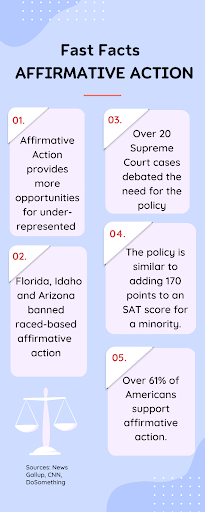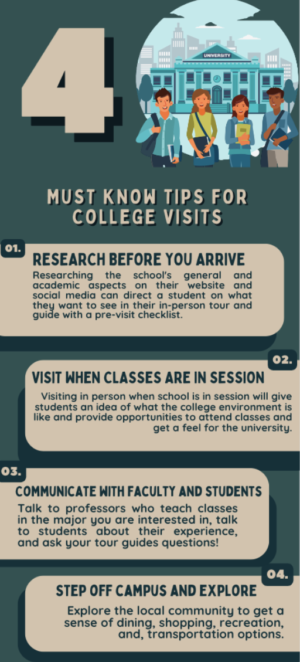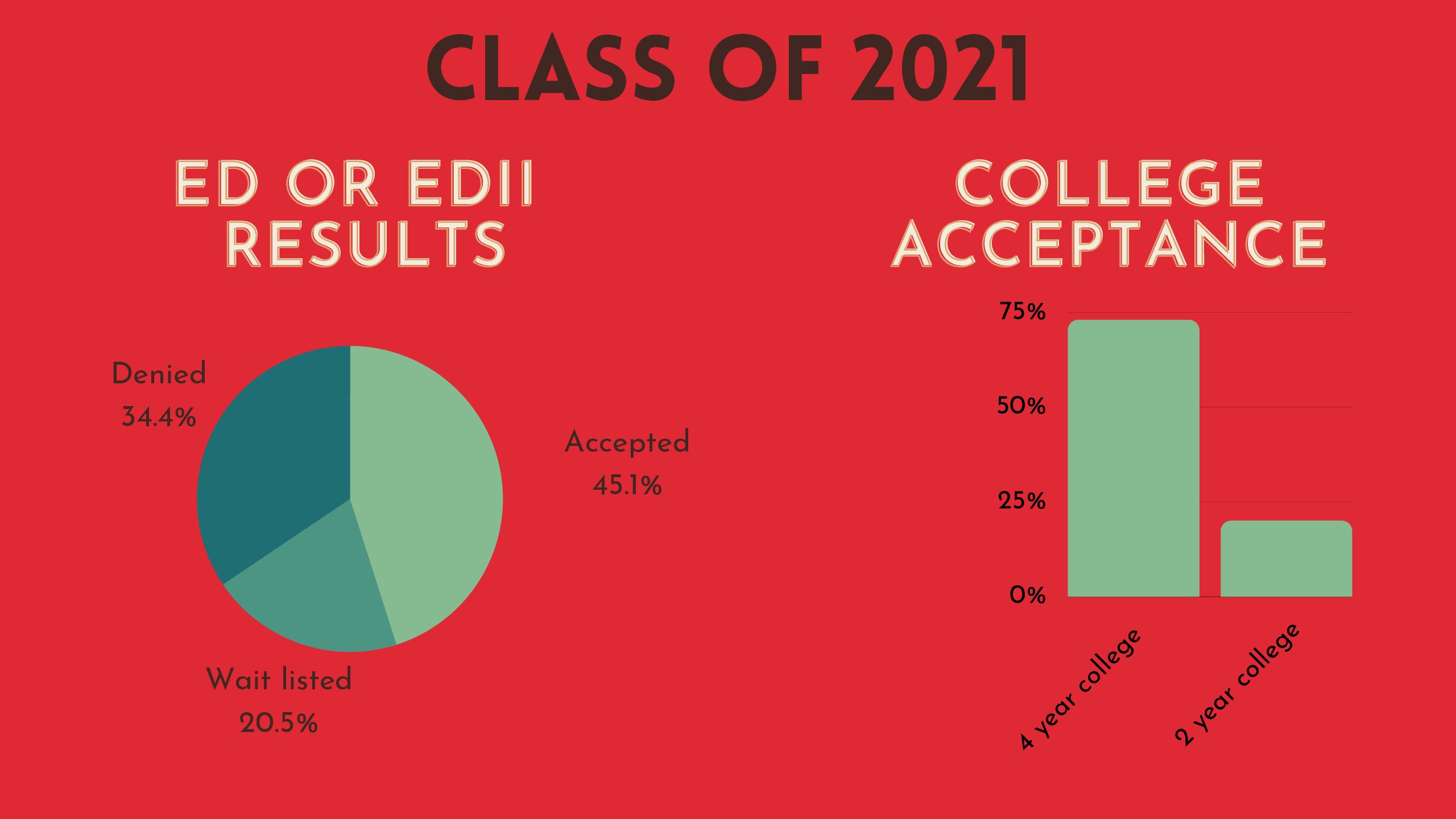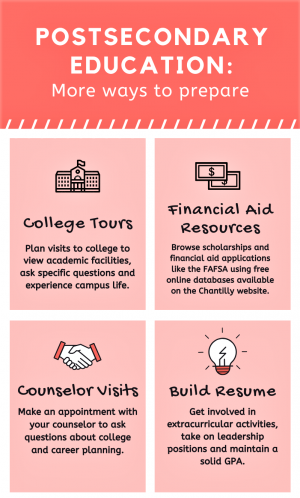New Supreme Court cases may change future of affirmative action

Knowing information about affirmative action can prepare students for college admissions.
January 13, 2023
In an attempt to put an end to race-based selection in the college admission process, Students of Fair Admission recently introduced cases against two colleges, University of North Carolina (UNC) and Harvard College, to the Supreme Court.
Students of Fair Admissions, the plaintiff, questioned if considering race in the admissions process violated the Equal Protection clause of the 14th Amendment. The debate revolves around affirmative action, a policy where an individual’s color, gender, race or national origin is considered as selection criteria for students pursuing higher education.
The intent of the policy is to help those from historically underrepresented backgrounds obtain higher chances at admission, despite possibly having lower test scores or grade-point averages. However, students from overrepresented groups, such as Asian-Americans, may need to meet higher standards for acceptance.
“It isn’t fair that there are students who get the short end of the stick,” senior Sanjana Kanapathi said. “If schools are looking for a certain description that you don’t fit in, even if you are high-performing, you might be pushed off to the side. This defeats the purpose of affirmative action, considering the whole point is making things more equal for all students.”
Both Harvard and UNC utilize a “holistic review” process, according to BestChoiceSchools. This means that consideration is placed on race and socioeconomic status to develop a diverse student body.
“I agree with the points made by these schools because minorities that aren’t able to receive the opportunities in college admissions would get an upper hand,” freshman Sirichandana Yakkala said. “Instead of drawing students from a specific group, I would say affirmative action is definitely more inclusive.”
In contrast to the arguments set by Harvard and UNC, schools such as the University of California, Los Angeles and the University of Michigan, which draw thousands of applicants yearly, have banned affirmative action, according to UCLA Newsroom and UMich News. Instead, these schools have implemented outreach programs to attract minority students, such as D-Rise which exposes students from underrepresented backgrounds to research enterprises.
“Having these outreach events in place gives everyone an equal chance in the admission process and equal resources to succeed without the factor of race or gender,” Kanapathi said.
If Students of Fair Admissions wins the case, it will cause several other universities to rethink race as a factor in admissions. The point made by UNC and Harvard is similar to that of the Supreme Court when debating Thomas Jefferson High School of Science and Technology’s (TJ) policies. After facing backlash over the fact that Black and Hispanic students make up only a small portion of the student body, TJ was required to accept 1.5% of the eighth-grade class at each of the district’s middle schools.
“I actually think their new policy is more effective than the previous test because now the school has a diversified student body,” Yakkala said. “Also, students who can’t afford these test-prep resources will also be treated equally.”
Fairfax County is made up of a pool of exceedingly qualified candidates, according to director of student services Amy Parmentier.
“Affirmative action policies provide an equal opportunity for everyone to succeed,” Parmentier said. “However, even for those who aren’t benefited by affirmative action, what’s more important is what we each put into our opportunities to achieve success,” Parmentier said.





